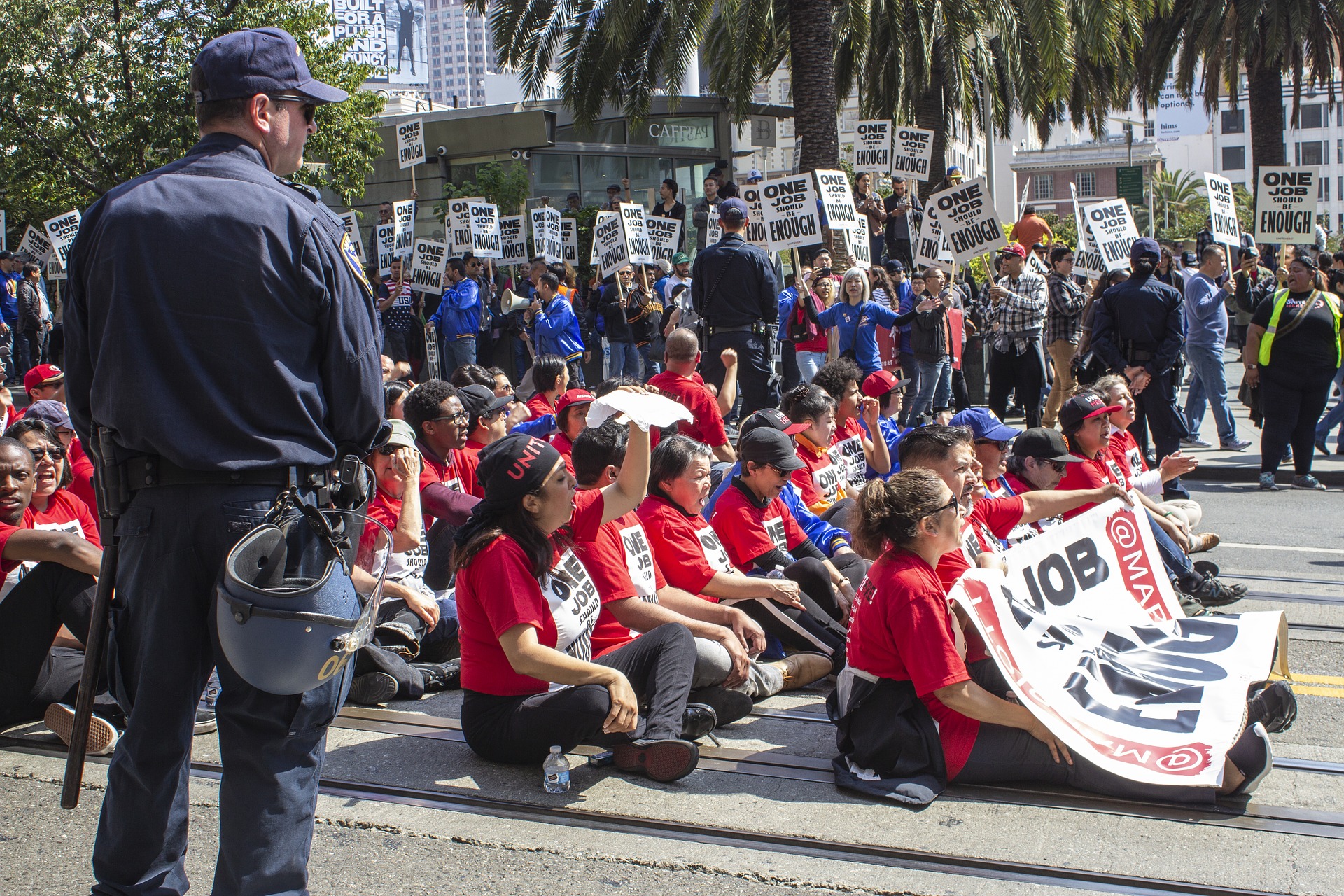As part of EWOC’s ongoing educational series, we’re highlighting the processes involved in organizing your workplace and explaining union terminology you might be unfamiliar with.
Collective bargaining refers to the negotiation between an employer and a union made up of workers to reach a new agreement on workplace conditions. So how does it work?
Let’s say you and your co-workers just planned a day of action at your workplace: you formed a committee, researched what issues were most important to you, wrote out a list of demands, gathered a majority of signatures, and delivered a petition to your boss.
These various acts all fall under what is called protected concerted activity, a legal term defined by the National Labor Relations Act (NLRA) that protects employees from employer retaliation when engaging in the activities mentioned above.
Protected concerted activity is when two or more workers act together to improve the conditions of their workplace, and doesn’t necessarily have to involve the formation of a union. At this point, workers have yet to start the collective bargaining process.
Coming to the Table: Collective Bargaining
Say that the petition you delivered to your boss included a demand to unionize and that after going on a recognition strike, your boss agreed. Although much of the hard work has been done, the longer work is just beginning: collective bargaining to reach an agreement on workplace conditions.
This step is generally reached in one of two ways. Workers can win a National Labor Relations Board (NLRB) election in which a simple majority (50% plus 1) agree to join a union. Alternatively, through a process known as card-checking, a union can collect a supermajority (usually greater than 70%) of cards signed by workers and present them to management, who then agrees to negotiate in good faith. Once workers gain formal union recognition from the employer, negotiations begin over starting pay rates, health benefits, pension contributions, seniority rules, and more. This process typically takes over a year. During this time, workers are usually not yet dues-paying union members.
Without a union, there is little to stop your employer from dictating the conditions of your workplace unless you maintain a strong rank-and-file worker committee that constantly stands up to management, engages in direct action, files unfair labor practice grievances with the NLRB, and other rank-and-file activities. As we have discussed, there are pros and cons to organizing a formal union, but a union does give employees the right to negotiate a new contract and compels an employer to bargain with them.
The NLRA guarantees this right, along with several others related to collective bargaining. It states that there must be a general promotion of the practice and procedure of collective bargaining. It gives employees the right to discuss wages, and it ensures that there can be only one exclusive bargaining representative for a unit of employees.
Negotiating: A Rank-and-File Approach
Just as EWOC advocates a rank-and-file organizing strategy, we also advocate for a collective bargaining process that is open to all workers and decided by workers. As Jane McAlevey points out in Turning the Tables, an ideal collective bargaining process “invites, if not directly engages” workers into the negotiations, doesn’t involve gag orders that prohibit committee members from speaking, and involves committees that are large and are composed of people elected by the workforce. Jane is also quick to point out that contract lengths should be short and should line up with other workplaces in similar industries. This would give the workers at various worksites a big bargaining chip because if they didn’t like the terms of a new contract, they could go on strike.
All roads do lead back to the strike. Withholding labor remains the greatest strength workers hold in a capitalist society. However, since the passage of the Taft-Hartley Act in the late 1940s, many business-union leaders started agreeing to include no-strike clauses in their collective bargaining agreements. These clauses severely hampered workers’ ability to pressure their employers or engage in solidarity actions with other workplaces, as we saw in the recent carpenters strike in Washington State.
Recent contract disputes involving the UAW with John Deere and IATSE with the Alliance of Motion Picture and Television Producers highlight how important the picket line is to winning better working conditions. Even as union leaders tried desperately over the last few months to negotiate a settlement, the workers had authority to decide their own fates, resoundingly rejecting a proposed contract, in the case of the UAW and John Deere, and authorizing a strike, should a deal not be reached, with near unanimous agreement, in the case of IATSE. Even during the collective bargaining process, mass workplace actions remain the most powerful leveraging tool.
Staying Vigilant
The work is never over. If businesses continue to prioritize profit margins, then workers will always be given the short end of the stick. Workers must remain vigilant, stay rooted with their fellow workers, and be prepared to strike, which should always be a key discussion point when negotiating a contract.




